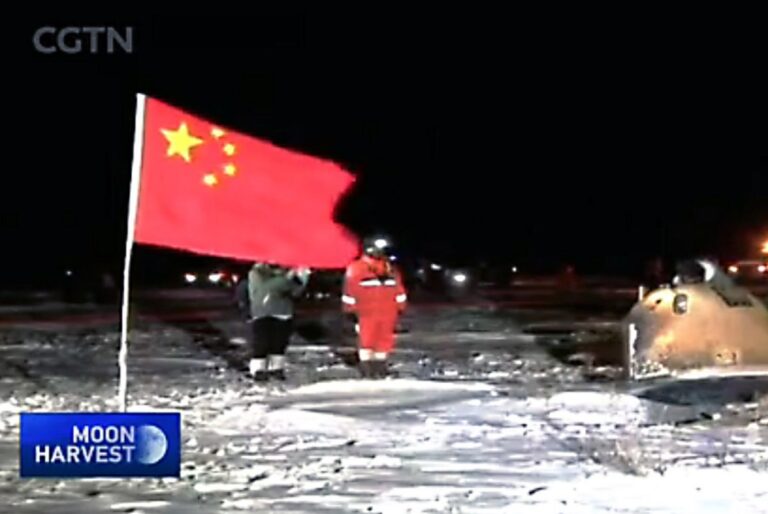June 2 (UPI) — The China National Space Administration announced that a Chinese spacecraft has landed on the far side of the moon after a month-long journey.
China space agency officials have expressed their intention to collect rocks and soil from this hard-to-reach area of the moon for the first time in history, the CNSA said.
“There’s a lot of excitement around the possibility of seeing rocks that no one has seen before,” John Parnett Fisher, professor of lunar geology at the University of Manchester, told the BBC.
China’s state broadcaster said “applause broke out at the Beijing Aviation and Aerospace Control Center” when Chang’e landed on the moon’s surface early Sunday morning.
Chinese space scientists landed Chang’e-6 in a crater known as the Apollo Basin. “We chose this site taking into consideration the potential value of the Apollo Basin for scientific exploration, as well as the conditions of the landing area, including communication and telemetry conditions and the flatness of the terrain,” said Huang Hao, a space expert at China Aerospace Science and Technology Corporation.
Huang said the terrain on the far side of the moon is rougher, making it more difficult to navigate than the near, or near, side, and offering fewer flat areas for successful landings. It also offers fewer windows for communication with unmanned spacecraft.
The probe hovered about 300 feet above the lunar surface and used 3D technology to scan it before landing, in what China’s space agency called a “historic moment.”
Chang’e 6 will now begin a three-day lunar exploration to collect materials as part of a mission that the CNSA said involves “a lot of technological innovation, high risks and great difficulties.”
Most notably, Chang’e 6 will aim to mine some of the oldest rocks known to exist at the lunar south pole.
Perne Fischer said the opportunity to analyze rocks and other objects from completely different parts of the moon could help answer fundamental questions about how planets form.
Most of the rocks collected so far are volcanic, similar to those found in Iceland and Hawaii, he says, but the material on the far side will have a different chemistry.
“This discovery will help us answer some really big questions like how planets form, why the crust forms and what the origin of water is in the solar system,” Parnette Fischer said.
China is the only country to have landed a module on the far side of the moon for the first time with its Chang’e-4 spacecraft in 2019.


